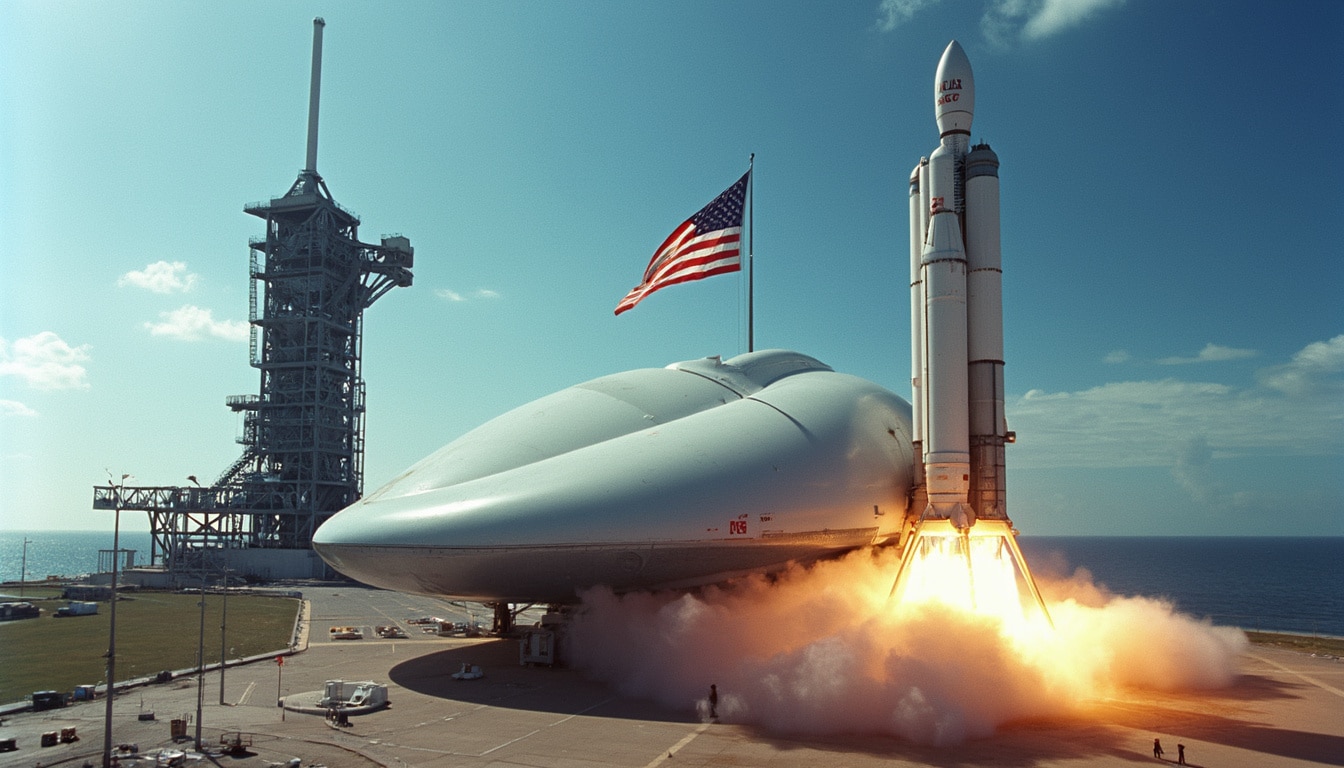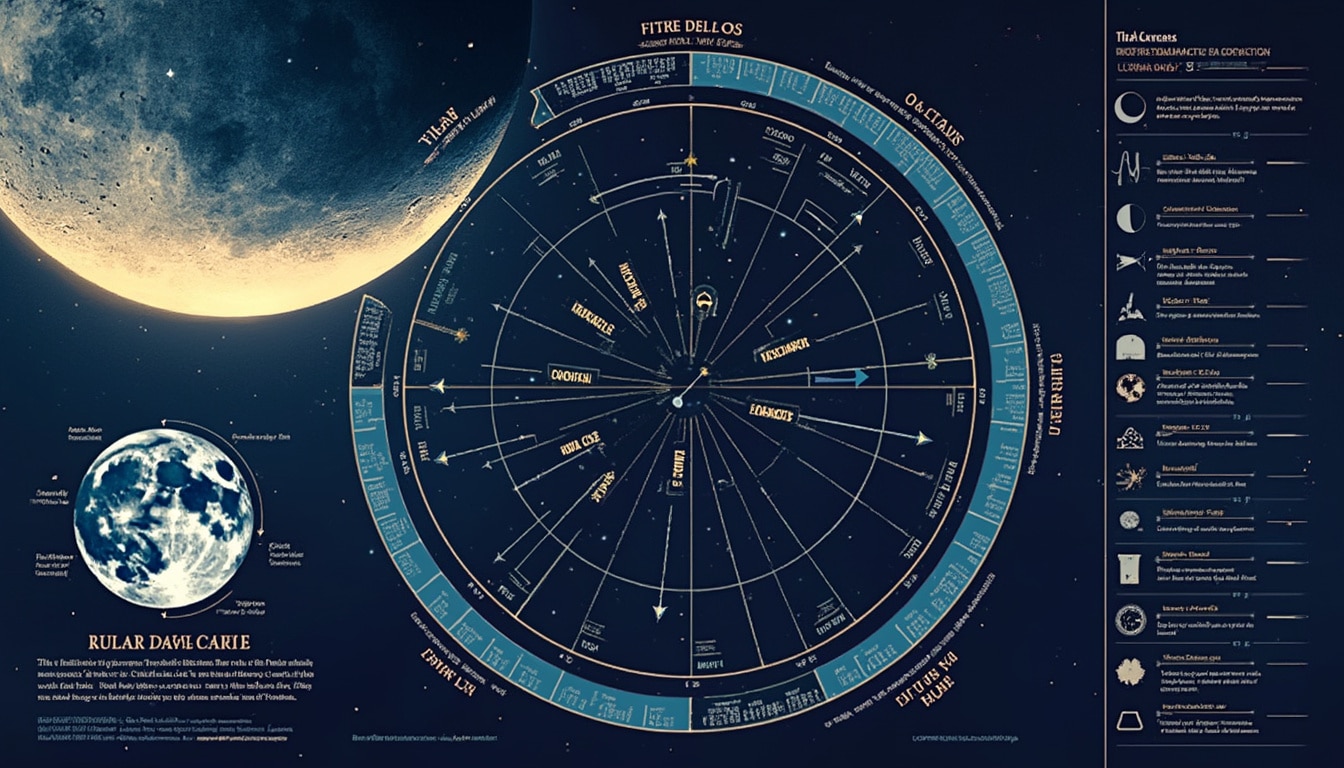The universe is vast and full of mysteries, but few hold our fascination like the Moon. A celestial body that has captivated humanity for centuries is now the focus of a new chapter in space exploration. NASA is embarking on a groundbreaking mission featuring a private lunar lander, paving the way for future lunar ventures. This mission underscores advancements in technology and collaboration between scientific agencies and private companies, heralding a new era of space exploration. With the aim of reacquainting ourselves with our closest neighbor, let’s explore the intricate details of this mission and what it means for humanity’s journey into space.
The Launch of the Blue Ghost Lunar Lander
The excitement is palpable as the lunar lander, named Blue Ghost, embarks on its journey. Launched from Kennedy Space Center, this mission has become a milestone, marking a significant step towards NASA’s Artemis program. The landing of the Blue Ghost is set to occur after approximately 60 days of travel, bringing with it an array of scientific instruments designed to explore the Moon’s geology and environmental conditions.
The Blue Ghost is not just any spacecraft; it represents a partnership between NASA and Firefly Aerospace, a company known for its innovative technology. This collaboration showcases a future where private and public sectors work together to achieve what was once thought a realm of public agencies alone. The mission, which cost around $93 million, is designed to deploy important scientific instruments that will aid in our understanding of the lunar environment. Set to land within Mare Crisium, a basin with a storied history of volcanic activity, this lunar mission is expected to unveil secrets hidden beneath the Moon’s surface.

Events Leading Up to the Launch
Preparation for Blue Ghost’s journey began long before takeoff. Renowned for meticulous planning, the teams involved had to conduct countless simulations and tests to ensure its success. The vehicle itself stands at over 6 feet tall and roughly 12 feet wide, equipped with solar panels and advanced technology intended to facilitate a smooth landing. A network of systems is designed to manage various challenges, from the vacuums of space to the gravitational forces at play near the Moon.
After launching aboard a SpaceX Falcon 9 rocket, Blue Ghost quickly entered orbit, establishing contact with mission control in Texas. Initial updates indicated the spacecraft beamed back significant data, including stunning imagery of the Earth and its atmosphere. It is expected that as it travels, Blue Ghost will continue sharing valuable insights concerning its health and the surrounding cosmic environment.
The Purpose of the Blue Ghost Mission
Delving deeper, the Blue Ghost mission encapsulates a variety of scientific pursuits. NASA aims to deploy up to ten instruments that will monitor lunar conditions and conduct experiments. These instruments are set to return invaluable data related to lunar geology and the physical properties of the Moon’s surface. This effort not only marks an important phase in lunar exploration but also significantly advances our knowledge of Earth’s only natural satellite.
Through the analysis of data collected from the lunar surface, scientists hope to understand the impact of cosmic events on lunar geology, potentially revealing insights that can be applied to Earth as well. Understanding the Moon’s history can also shed light on the processes that have shaped our planet over time.

Key Instruments and Experiments
The instruments on board Blue Ghost are tailored to various scientific objectives. Among them are advanced X-ray imaging systems capable of analyzing the Moon’s subsurface structures. This technology seeks to provide clarity on the lithological composition of the lunar surface, answering critical questions about its geology. The exploration of lunar material through subsurface drilling techniques is also planned, offering the potential to unearth samples that could expose the Moon’s ancient secrets.
In addition to geological analysis, the mission has incorporated an environmental monitoring approach. With instruments designed to measure lunar dust, temperature fluctuations, and solar radiation levels, researchers will be poised to understand the broader implications of these factors on future missions with a human presence. As humanity looks towards establishing a long-term presence on the Moon, these insights will prove essential.
Post-Landing Activities and Experiments
Upon landing, the Blue Ghost’s mission will extend beyond mere transportation of instruments. The operational agenda is designed to keep the equipment active for a full lunar day, approximately 14 Earth days. This time frame allows the collected data to flourish while also permitting regular assessments of the deployed instruments. Moreover, as the instruments gather information, they will provide vital knowledge regarding the Moon’s dynamic environment.
Furthermore, exploration of the lunar sunset offers an intriguing proposal. As the sun sets over the lunar landscape, the chance to capture high-definition imagery opens a new chapter for visual data collection in space. Collecting electromagnetic data during this time will add depth to behavioral studies of lunar weather patterns.

Understanding the Lunar Environment
The lunar environment presents unique challenges and opportunities for research. The lack of atmosphere complicates the risks posed by cosmic radiation. The instruments onboard are designed not only for data collection but also for defense against extreme temperature variances. Previous missions have indicated that a lunar day can see temperatures rise drastically before plummeting during its night. A detailed understanding of this will inform future missions aimed at sending humans back to the Moon.
Additionally, researchers aim to monitor how the lunar surface interacts with solar wind. The data collected may determine how space weather impacts lunar geology over time, offering insights into the Moon’s attractiveness for future human habitation and exploration.
What Lies Ahead: Future Lunar Missions
The success of the Blue Ghost mission will pave the way for more intricate lunar explorations under NASA’s Artemis initiative. This program intends to establish a sustainable human presence on the Moon, expanding our understanding of both the Moon and its relevance to our own planet. Future missions are expected to further enhance collaborations with private enterprises, ensuring that advancements in technology remain a cornerstone of space exploration.
Moreover, as we prepare for journeys to Mars and beyond, understanding the Moon’s environmental conditions becomes increasingly essential. Data harvested from the Blue Ghost mission will guide future trajectory and safety considerations for these ambitious missions. By continuing to explore the Moon, we solidify our foothold in the solar system, growing closer to fabricating a comprehensive strategy for interplanetary exploration.

The Role of International Collaboration
International collaboration has become indispensable in contemporary space missions. The Blue Ghost mission exemplifies how partnerships across nations and industries can foster unprecedented advancements in our understanding of the Moon. As more countries consider lunar missions, the sharing of data and technology will be paramount. Collaborative efforts will lead to more robust exploration initiatives, employing a wider range of expertise and perspectives.
Collaborations with agencies such as the European Space Agency (ESA) and others will bolster innovation in spacecraft design and scientific inquiry. These efforts ensure that space exploration is not merely confined to national borders but becomes a shared journey for humankind.
Concluding Thoughts on the Blue Ghost Mission
As we stand on the brink of a new era in lunar exploration, the Blue Ghost mission serves as a reminder of the perseverance and ingenuity that humanity can achieve. Looking back at the success of previous lunar missions, this endeavor represents a monumental leap forward in our quest for knowledge. It illustrates the collaborative spirit of our age and the growing role that private entities are playing in the realm of space science. Anticipation for the outcomes of Blue Ghost’s findings is nothing short of extraordinary, as they promise to unveil not only the mysteries of the Moon but also potentially redefine our approach to life beyond Earth.




Leave a Reply